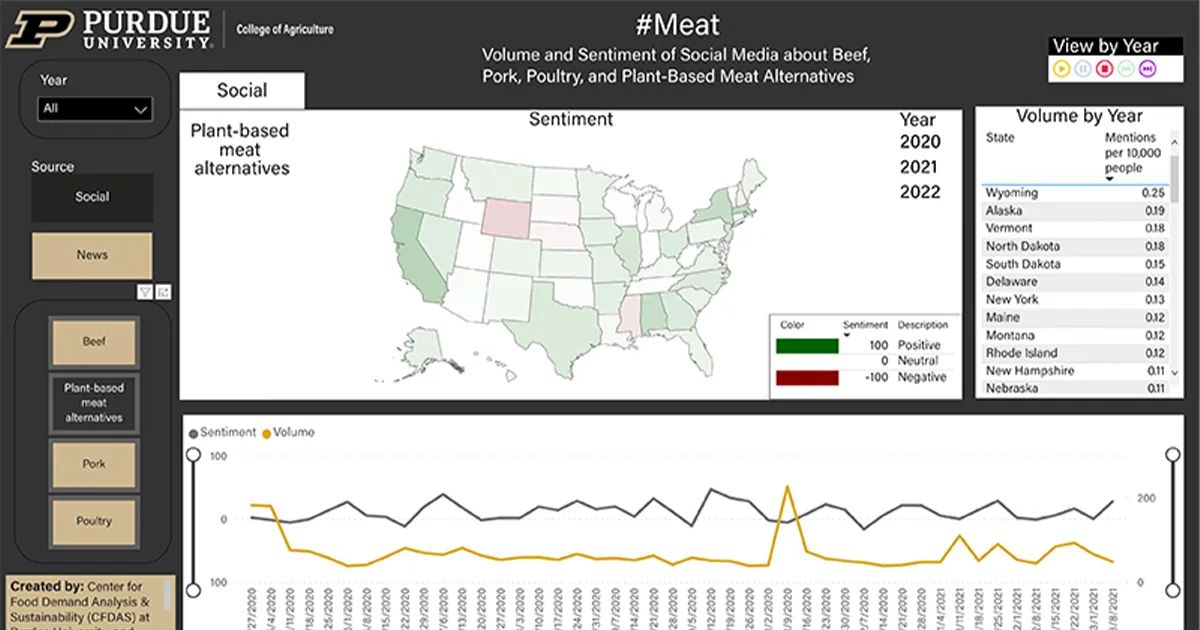
Purdue University Launches Program to Track Meat Sentiment in News, Social Media
August 26, 2022
Purdue University's Center for Food Demand Analysis and Sustainability has added a meat sentiment dashboard to its roster of free-access food system dashboards. The new dashboard, updated weekly, shows the sentiment and volume of meat and meat alternative mentions in social media and online news.
Users may explore the sentiment and volume of #Meat mentions in all 50 states individually for social media or the entire country in a narrowly or broadly defined time range starting with April 2020 in online news and social media.
"The general perception is more positive than what the average person might guess," said Nicole Olynk Widmar, professor and associate head of agricultural economics at Purdue. During the height of the COVID-19 pandemic, for example, shoppers may have been unhappy with meat availability. Meat was available, but not always exactly what shoppers wanted, when and where they wanted it.
"Perception is going to reflect a few key headlines that may or may not have correctly reflected the state of the industry. This dashboard gives you a chance to look more holistically across the different products," she said.
The dashboard's color-coded sentiment gradient ranges from dark green for 100% positive to dark red for 100% negative. On social media in Indiana from April 2020 to July 2022, for example, poultry had a net sentiment of 49.30, followed by beef at 39.72 and pork at 37.30. Plant-based meat alternatives, meanwhile, rated a barely positive net sentiment at 3.20. The volume of relevant daily posts during this period ranged from a high of 2,955 to a low of 1,485.
In the news nationwide for the same time period, poultry (3 million posts) and pork (2 million posts) both had net sentiments of 32. Beef came out with a positive net sentiment of 29 over 1 million posts. Plant-based meat alternatives had a net sentiment of 26 over 387,000 posts.
Individual companies in various industries have a profit motive to privately collect and analyze data relevant to the demand for their own products. But when it comes to big data and agriculture, "It's just sitting there and not being used as well as it could be," Widmar said.
Source: USAgNet










